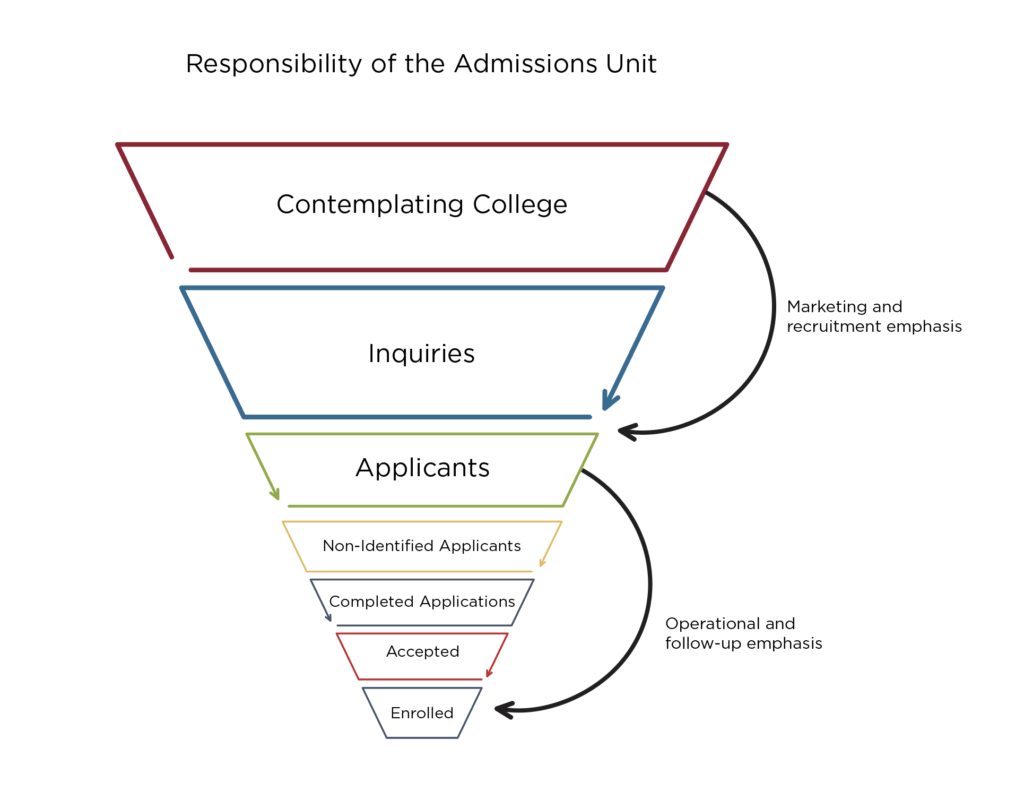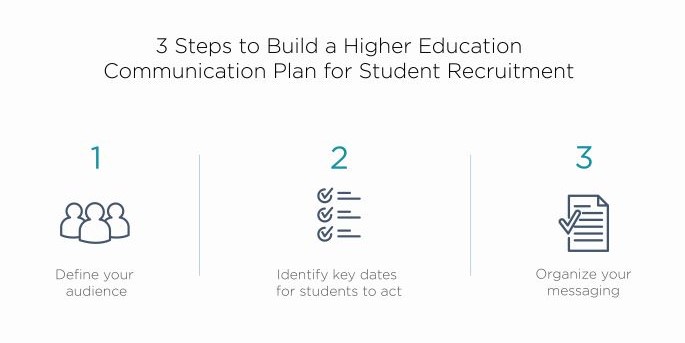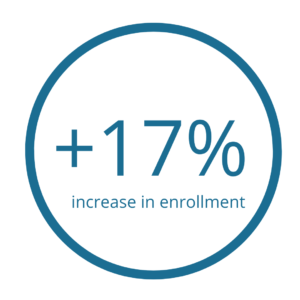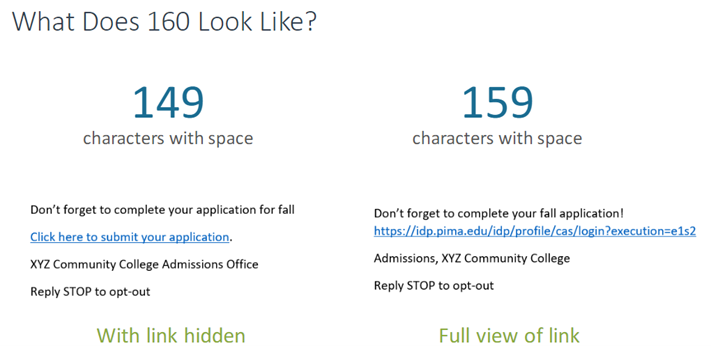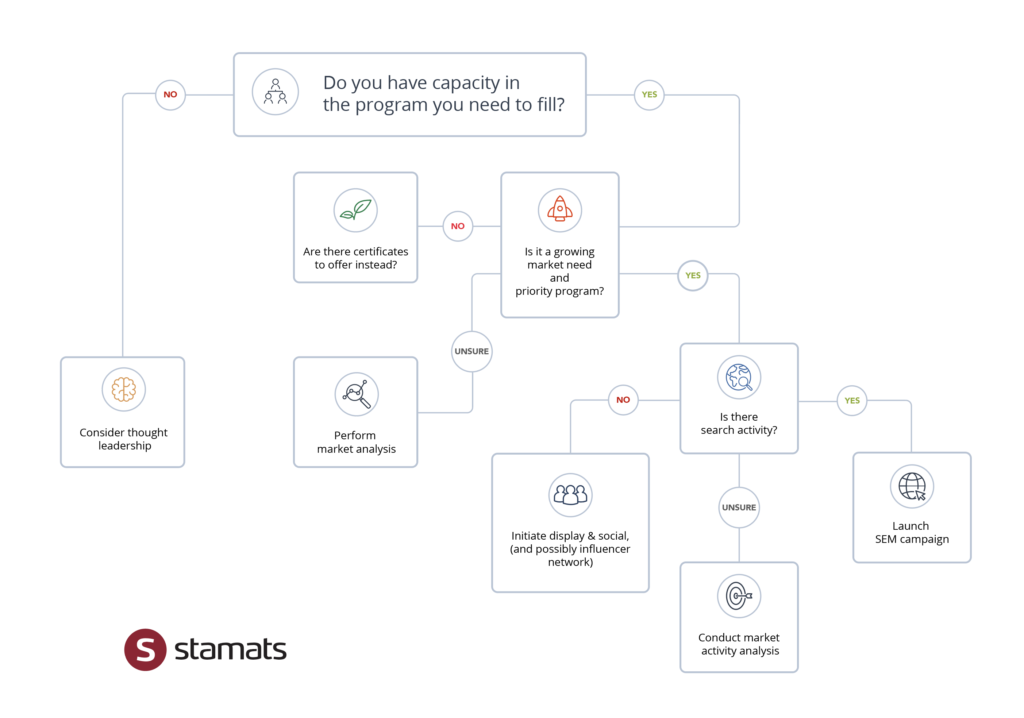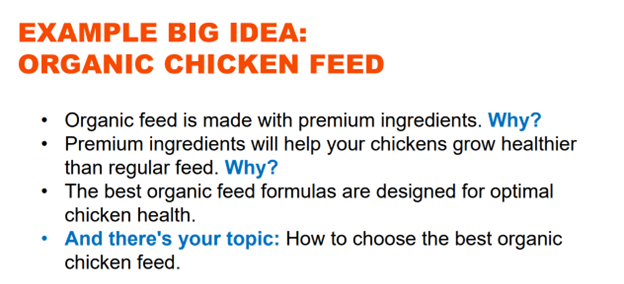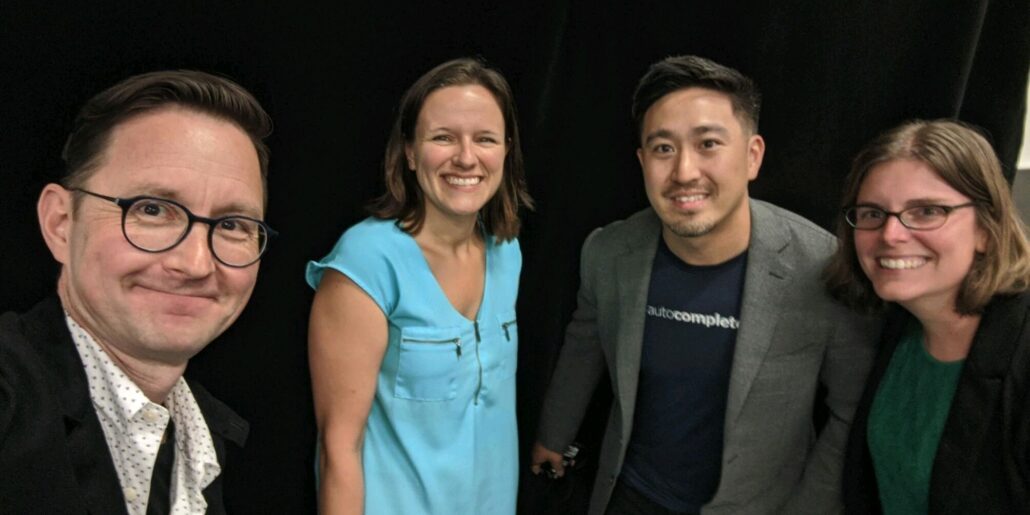Shortly after joining the team, reality set in how one can drink from a fire hose working in higher ed. As I graduated from one role to another, more responsibilities were added—and then more.
As someone who had never managed a communication plan, I searched desperately for outlets and resources to learn how to create emails, schedule them, and connect with my audience. At one point, I had a wall full of post-it notes in an attempt to teach myself to segment audiences.
At the same time, we were launching our first CRM. I was accountable for managing the social media accounts, and we were still trying to connect social to recruitment, marketing, and communications—and paving a lot of new roads.
As technology continued to grow, I felt like I would never catch up. My beginning encompassed SIS Banner (Ellucian) and spreadsheets that were uploaded into an email system to send.
Like a fire hydrant that can’t be turned off, the work continued to come but hours were not added to the day. I wrote policy and created new workflows and management for the systems. The ever-imposing question loomed—how does one get the work done?
- We needed a new person to manage the CRM data
- We needed someone to run social media
- We still needed a website manager
- And we got zero additional budget dollars with which to do it all
This scene is not unusual in higher ed. As we continue to add, we start looking for snorkel gear to stay afloat. We know we can’t take away from the growing tasks and duties for marketing and communications. So, what’s a marketer to do?
In retrospect, much of my time in higher ed was spent riding a wave of rapid information download. It was a crazy time. But the information gained from those experiences set me up for my success today and gave me insights to help higher ed marketers like you rise with the tide when you start to feel underwater.
5 Tips for Finding Resources—and Giving People Chances
In a world where higher ed enrollment is declining, this is the time to strategize and find the help you need to be a rockstar.
- Find yourself first. Establish your position in your department—trying to do it all helps no one. It will create frustrations for you and for the staff looking for your assistance. Create boundaries and work toward a solution to include others. Then you can work toward building successful communication plans.
- Customer relationship management. If you already have a CRM, find a great marketing firm to help strategize your communications and organize your emails in the CRM. A great partner can help you create impactful digital ads. If you don’t have a CRM, then find an email platform and get on top of your data. Managing data outside of a system is painful and will lead to disasters, like sending the wrong message to the wrong parent on a recruitment list (yes, I did this once in a previous position). Find someone like me to help organize your data and create a system within the budget.
- Social media campaign management. If your college has a student intern for social media, include them in learning how campaigns are created and launched. Don’t give them the keys and turn them loose. While they likely won’t have the expertise to run the campaign solo, adding a student worker can create a win-win environment. I remember a time when our department was asked to lead a marketing effort on campus to help students showcase their work at the end of the year. We were at full capacity, and I knew that if we added another project, stuff would simply start breaking, including my staff’s morale. I already had a student worker in our department, so I assigned the campaign for her to manage. We had weekly check-ins and I shared my collateral on managing campaigns to help get her started. I approved all final products to provide constructive feedback. The faculty involved loved working with a student and giving her a positive experience. She did a great job. It built her resume with practical experience and our department got the job done. In the second year, she took the project and was able to improve on what had been done the previous year.
- Google Business Profile optimization. Another example I recently saw is the constant growing points marketing departments need to oversee for risk management. Google Business Profile is one of those examples. I have not taken a poll but would surmise that this is not on the radar for most colleges and universities. Leaving this unchecked puts the institution at risk for someone unaffiliated or unqualified claiming a location. Locations that are never claimed and are a poor representation of the institution affect brand and search engine optimization (SEO). Marketing directors and similar roles may not know much about this lengthy process and its ongoing maintenance. Find someone who can help claim sites. Add expertise to your team to get this done or partner with a service that can meet your budget and adjust to fill your department’s needs.
- Partner with an empathetic, actionable firm. I remember there was a time when I was looking for a marketing firm to help our department with social ads and retargeting. When I approached an organization I wanted to try and gave them my small budget, they never returned my calls. I laughed at the time and still to this day; I guess we didn’t fit their budget. Connect with a firm that serves as an extension of your team rather than a receiver of your money. A worthy firm will give you the best value for your budget dollar—even if the approach is a bit different than your original vision.
Related reading: Program Decision Tree: A Tool to Select the Appropriate Digital Strategy
Don’t Do This Alone
As each additional channel and technology are added, your team will need new skill sets, adding a level of expertise for each solution. Skills for managing a website are different than those for managing email, print, or digital ads. It is unreasonable for one person to do it all, or at least do it all well. Trying to cover all areas will lead to mediocre performance and more errors.
If the marketing budget can allow you to hire another team member, determine your greatest area of long-term need. For big or short-term projects, it is easier and often more cost-effective to hire contractors or a firm to help with the digital piece.
Digital marketing, whether it is web, social ads, search ads, email, and more, is a growing specialized business. It makes sense to hire outside to add expertise to your marketing team, even when it is a team of one—you. How can I help? If you need communications support (or just want to scream into the void), let’s schedule a time to talk.
Ready to Get Started?
Reach out to us to talk about your strategy and goals.

